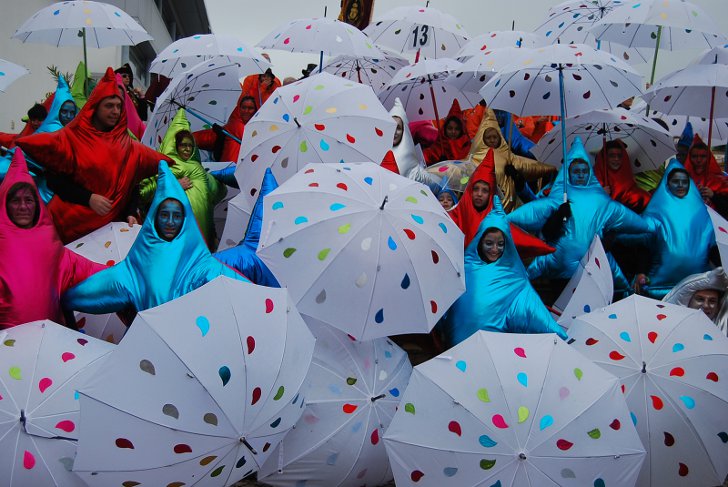The Torres Vedras Carnival in its modern form was created in 1910 following the overthrow of the monarchy and the establishment of the First Portuguese Republic. The First Republic was intensely anti-clerical and the new authorities wanted to create a Carnival celebration that would be secular rather than religious. Nevertheless the Carnival of Torres Vedras is regarded as the most authentic Carnival in Portugal because it remains faithful to the old Shrovetide traditions. It is also known as the country’s most satirical Carnival.
The Carnival of Torres Vedras typically begins on the last Friday before Lent. The Mayor hands the keys to the city to the King and Queen of the Carnival. Interestingly, the King and Queen are both men of which one (the Queen) is dressed as a woman. The festivities last until Ash Wednesday (the first day of Lent). The Carnival week is packed with parades, parties, and other festive events.
The Carnival of Torres Vedras is known for its traditional characters called matrafonas. Matrafonas are men dressed as women, they typically wear women’s dresses, wigs and makeup. Originally, marafonas or matrafonas are rag dolls dressed in regional costumes, they symbolize fertility and marital bliss. In Torres Vedras, however, they are portrayed by cross-dressers.
The highlight of the Carnival is the street parade with creatively decorated allegorical floats, of which many satirize modern society and politics. Many platforms are topped with papier-mâché puppets and giant heads called cabeçudos. The platforms are accompanied by Zés-Pereiras (marching bands) and costumed characters.
The Carnival hosts several parades. The Children’s Parade takes place on Friday, it features elementary and middle school students wearing masks they’ve made themselves. The Grand Parade is held on Carnival Saturday. It is traditionally accompanied by local musicians who play only Portuguese music. Alongside parades, there are performances that take place on several stages across the city and parties held at local bars.
The Carnival ends on Ash Wednesday with the burning of a straw effigy that symbolizes the carnival spirit.

Photo: Torres Vedras CM




